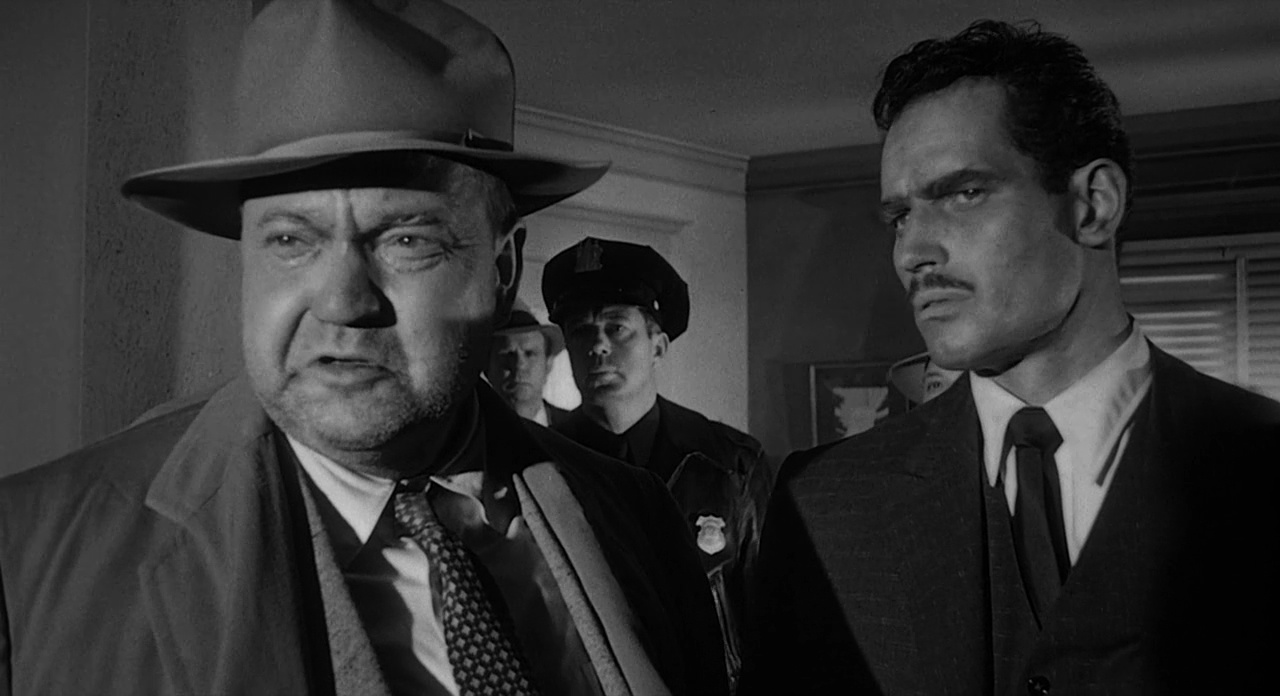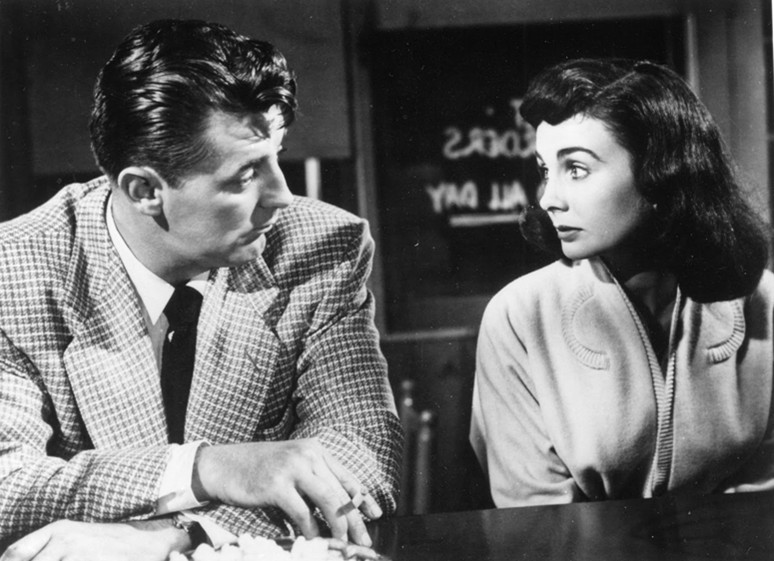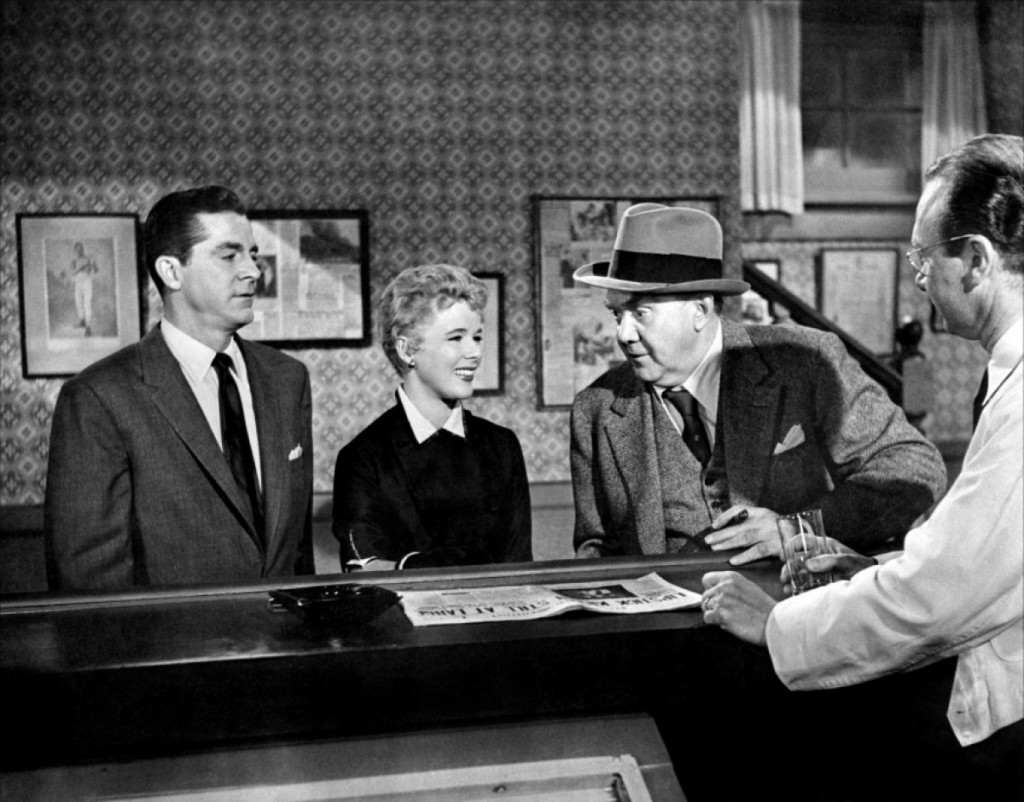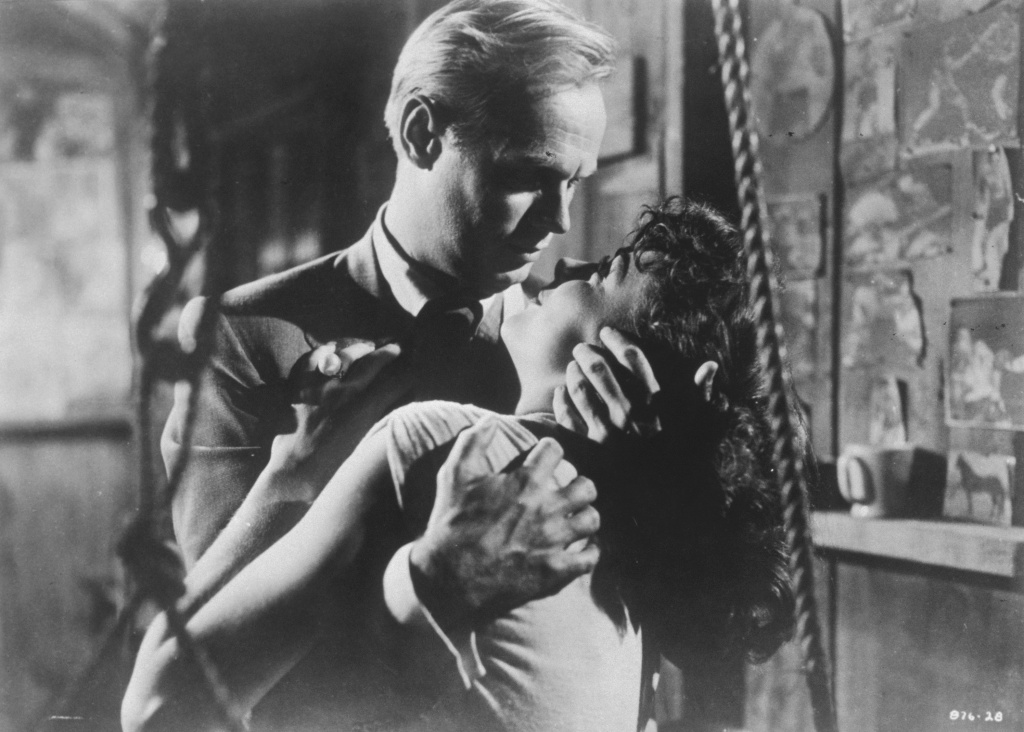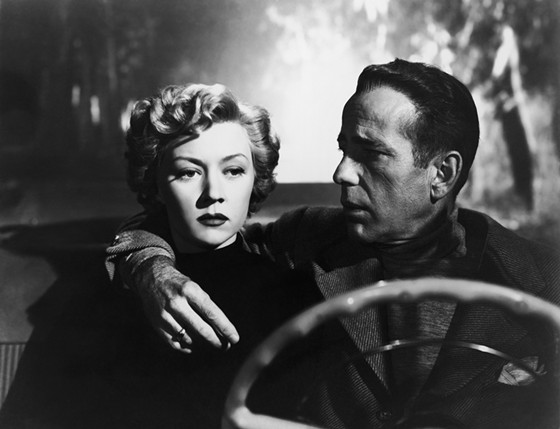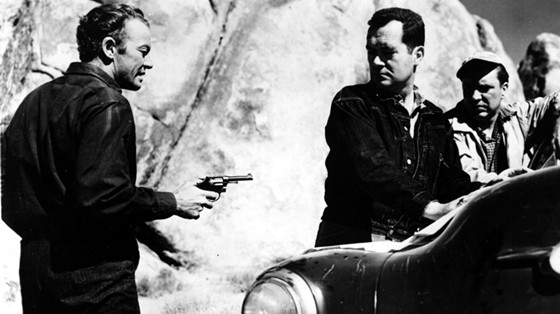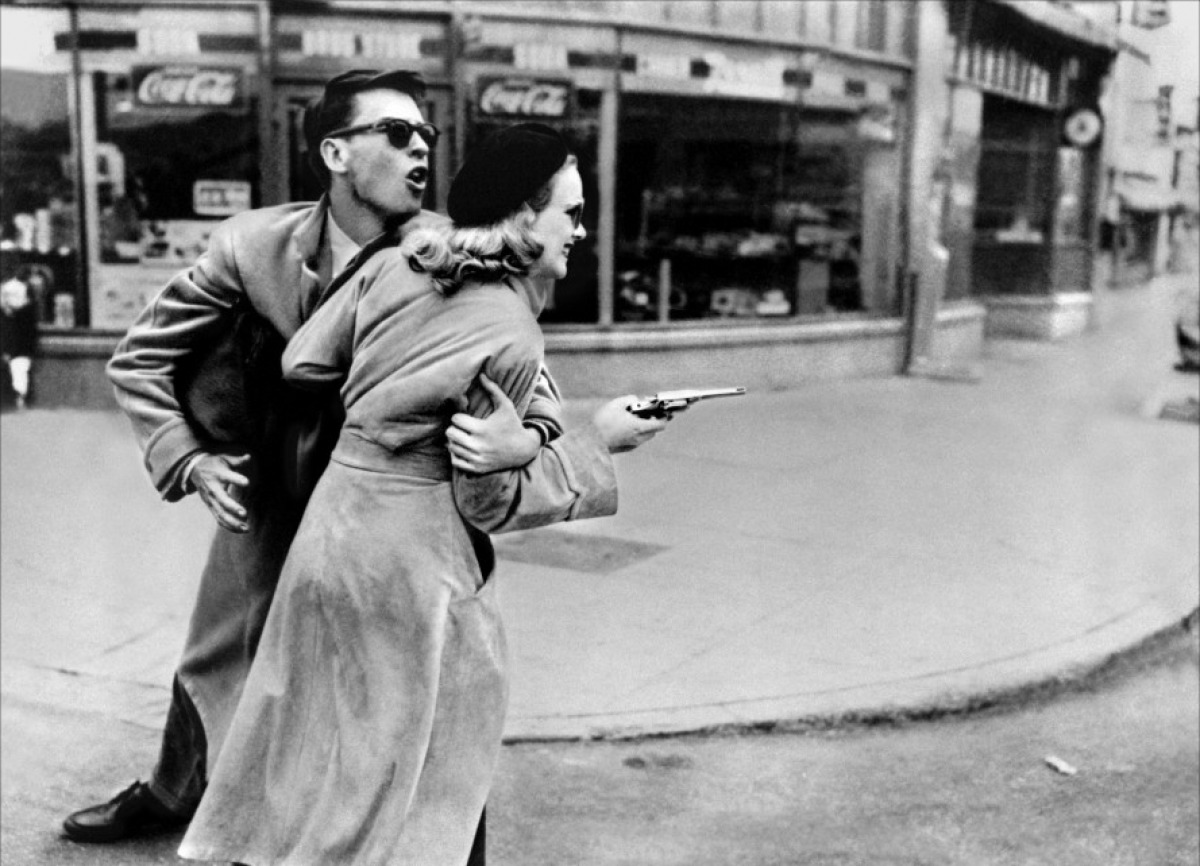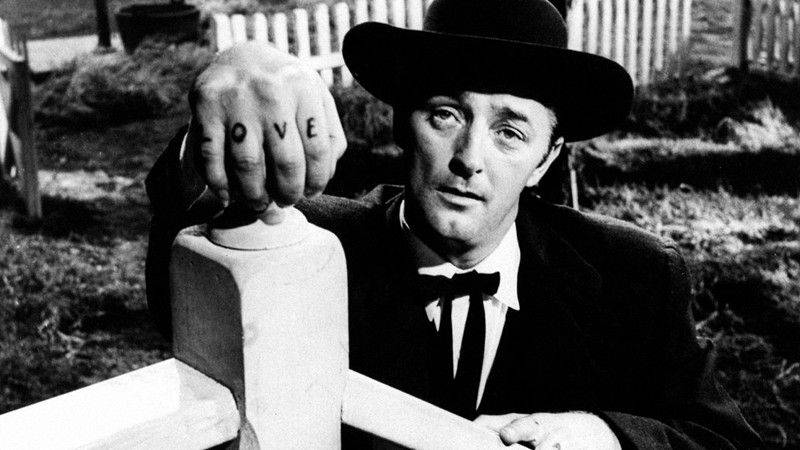Film noir, which had begun in the 1940’s, continued into the 1950’s, although there were obvious changes to the style. Gone were the hard boiled detective stories of Phillip Marlowe and Sam Spade, replaced by more unpredictable, violent figures like Mickey Spillane’s Mike Hammer and stories that emphasized psychological character studies.
The stories become more widely varied in terms of theme and location, reflecting looser codes and conventions and resulting in films as wide ranging as In a Lonely Place and The Night of the Hunter. Film noir of the 1950’s saw established directors like John Huston continue on, but also saw the entrance of new directors like Robert Aldrich and Stanley Kubrick. Here then are the 15 essential film noir of the 1950’s.
15. Angel Face (1952)
Directed by Otto Preminger, Angel Face stars noir veteran Robert Mitchum as Frank Jessup, an ambulance driver who becomes infatuated with Diane Tremayne (a young Jean Simmons) after Jessup is called to the Tremayne home. He eventually becomes the wealthy family’s chauffeur and risks his own relationship with girlfriend Mary by his flirtations with Diane. Diane is actually plotting the murder of her stepmother and father and draws Frank in on the plot with her.
Released by RKO with a great cast including Herbrt Marshall and Leon Ames, and music by Dimitri Tiomkin, Angel Face was once a somewhat forgotten film noir but has recently seen its reputation grow. Preminger, who directed the classic Laura and later in the decade will have a big hit with Anatomy of a Murder, avoids the melodramatic cliches in Angel Face by creating a haunting portrait of love, greed and obsession.
14. While the City Sleeps (1956)
A serial killer dubbed “the Lipstick Killer” is on the loose in New York attacking women, and when media mogul Amos Kyne dies, his son Walter (Vincent Price) initiates a battle between the various department heads to see who can solve the mystery and break the story first. In the midst of it all is reporter Walter Mobley, played by noir veteran Dana Andrews, who allies himself with newspaper man John Day Griffith (Thomas Mitchell) against wire-service chief Mark Loving (played by always despicable George Sanders). Mobley struggles to catch the killer while dealing with his own personal problems and the tumult at work.
A late entry from director Fritz Lang, While the City Sleeps was interesting for its depiction of the behind the scenes goings on of the media world in an era when newspapers and print reporting was still tops.
13. Pickup on South Street (1953)
Directed by tough guy directer Samuel Fuller, Pickup on South Street stars noir regular Richard Widmark as Skip McCoy, a pick-pocket who happens to steal the wallet of Candy (Jean Peters). Candy was doing a final favor for ex-boyfriend Joey who, unbeknownst to her is a communist spy, and in Candy’s wallet is a bit of microfilm containing stolen government secrets. Skip and Candy now become involved in a struggle with various government agents and mobsters, all after the microfilm, and finally have to learn to trust each other to survive in a world where the double cross rules.
An unusual story produced at the height of the McCarthy era, Pickup on South Street is a brutal and violent film that barely skirted the production code with its depictions of beatings and life in the mean streets. Made at Twentieth Century Fox, Marilyn Monroe was considered for the role of Candy, but director Fuller eventually gave the part to Peters.
12. In a Lonely Place (1950)
The difference between 1940’s and 1950’s film noir is never more evident than in In a Lonely Place, starring Humphrey Bogart as ‘Dix’ Steele, a down on his luck screenwriter. No longer playing the heroic detective, Bogart’s character is highly problematic. He has an explosive temper and after giving Mildred, a night club hat check girl, a ride home one night, is suspected of murdering her after she is killed later that night. Mildred’s neighbor, Laurel Gray (Gloria Graham) is called on to give testimony about seeing Dix at the apartment that night, and she enters into a tempestuous relationship with Dix while the murder investigation goes on.
In a Lonely Place was directed by Nicholas Ray, who would go on to direct James Dean in his definitive performance in Rebel Without a Cause. The complex characters and conflicting motivations make In a Lonely Place an unusual film noir, and give an indication of how the genre was expanding to take in a wider range of styles.
11. The Hitchhiker (1953)
For years, film directing was a totally male dominated profession, and The Hitchhiker is rare in that it was directed by a woman, actress Ida Lupino. Noir regular Edmund O’Brien and Frank Lovejoy play Roy and Gilbert, two friends on a fishing trip in the desert southwest. The two men pick up a hitchhiker who turns out to be the psychotic killer Emmett Myers (William Talman). Myers forces the two men to take him to Mexico in order to escape the police. The harrowing journey finally ends in a border town where Myers tries to take a ferry out of the country.
The film is gritty and suspenseful, and director Lupino substitutes the usual noir urban environment for the arid desert, as the two men try to survive their brutal ordeal at the hands of the killer. The film was based on a real incident that had occurred several years earlier, and it has a realistic sense that adds to the drama. After one more film, Lupino turned to directing TV shows, although she did have a final outing in 1966 with the definitely non noir The Trouble with Angels.
10. Gun Crazy (1950)
A precursor to Bonnie and Clyde, Gun Crazy is the story of Bart Tare (John Dall) a troubled young man who is good with a gun who meets sharpshooter Annie Laurie Starr (Peggy Cummins) when they work together at a carnival. Fired from the carnival by a jealous boss, Bart and Annie get married and try to live the straight life, but find themselves drawn to a life of crime. The two eventually go on a crime spree of legendary proportions. On the run and tracked by the FBI, the two lovers find themselves hopelessly trapped and eventually doomed, but not before plenty of violence occurs.
Gun Crazy developed something of a cult following in the 70’s and 80’s. It was directed by low budget director Joseph H. Lewis, who also built a cult following and directed several other interesting noir films, including My Name is Julia Ross and The Big Combo.
9. The Night of the Hunter (1955)
One of the most interesting films of the decade, The Night of the Hunter is notable as the only film directed by the great English actor Charles Laughton. Robert Mitchum plays an unusual part as reverend Harry Powell, a serial killer and self appointed preacher who marries and then kills women. Powell meets Ben Harper in prison; Harper has robbed a bank and stashed the loot in his daughter’s rag doll. Harper is executed and once Powell is out of prison he proceeds to woo Willa (Shelly Winters), Harper’s widow so that he can find the money hidden by Harper.
One of the most interesting, complex and visually expressionistic film noir, The Night of the Hunter was a failure at the box office and Laughton never directed another film again. But the movie has gained a considerable reputation, particularly amongst directors such as David Lynch and Martin Scorsese, who are on the record as admiring the film.
